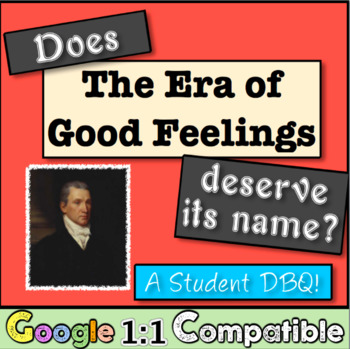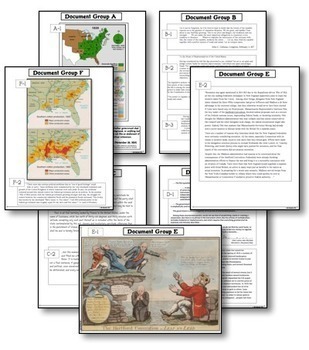The Era of Good Feelings: Does it Deserve This Name? Student DBQ Inquiry Lesson
- Zip
- Google Apps™

What educators are saying
Also included in
- Era of Good Feelings Bundle! 2 activities, 1 great price! Common Core focused!In this bundle, you receive 2 highly-engaging products on the Era of Good Feelings! The first activity is a guided notes and PowerPoint activity and the second is a very Common Core focused, student DBQ investigation onPrice $7.99Original Price $8.98Save $0.99
Description
The Era of Good Feelings: Does it Deserve This Name? Student Investigative DBQ! Google 1:1 Compatible!
This activity is part of two bundles to save you even more!
Jefferson, Madison, Monroe Unit Plan! 12 fun lessons for Jeffersonian America!
Era of Good Feelings Bundle! 2 activities, 1 great price! Common Core focused!
Both bundles are priced to save you considerably!
-------------------------------
In this highly-engaging and very Common Core focused activity, students take on the role of researchers and are asked to evaluate the question:
"Does the Era of Good Feelings Deserve Its Name?"
Students are engaged with 6 different document groups, each one focusing on a different negative aspect that contradicts the name historians often give to this period in history. Students examine the harmful effects of the expansion of slavery, the harsh debates over internal improvements, the unsettling nature of the Missouri Compromise, the unnerving political climate that developed from 1820 to 1824, and even the talk of northern secession at the Hartford Convention in 1814-1815!
Students examine a collection of 13 total sources and keep track of their analysis in their student packet, which is geared toward the Common Core with its analytical questions for each document!
This resource includes a paper in-class version and a 1:1 Google compatible version to be used in conjunction with Google Classroom. Just follow the included instructions for how to access the Google version, then share the resource through Google or assign via Google Classroom. This will allow students to type directly into the document!
A teacher key is included as well!
Enjoy!
----
Be sure to follow the History with Mr E Facebook page, and don't forget to signup for the Social Studies Newsletter to receive information on flash sales, product releases, and classroom tips!
----
While this lesson is not part of the "A New Nation Unit", it certainly is a great complement to it! Buy this lesson along with the unit to engage your classroom today!






